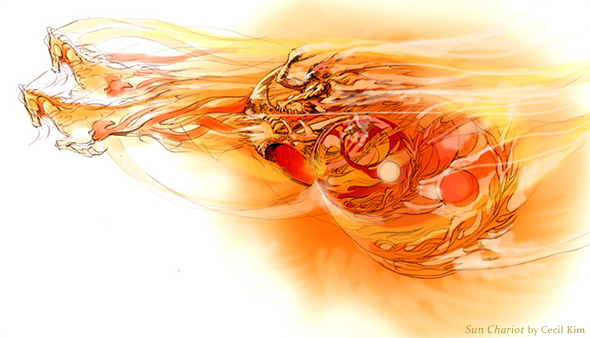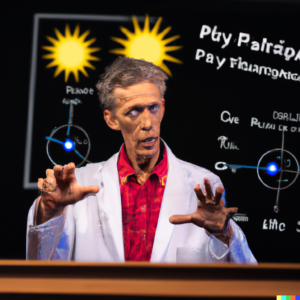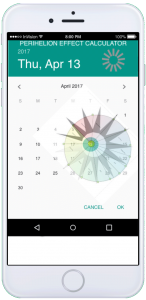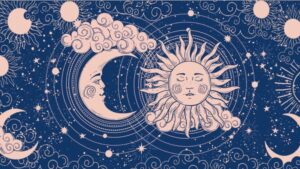More than three-quarters of all instances of human unrest—battles, upheavals, riots, revolutions, and wars—occur during the periods of the maximum number of sunspots in the Sun… So powerful is this cosmic zeitgeber that it may even influence our physical size, our longevity, our mental stability, our propensity to violence, and possibly even what we consider our uniquely individual motivation…
http://wariscrime.com/new/how-the-sun-affects-our-minds/
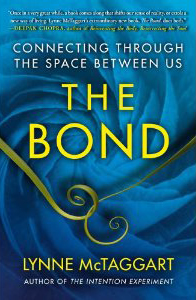 In 1922 Alexander Chizhevsky, a young Belarusian scientist, unveiled to the world a preposterous theory: that all the great upheavals in the history of man, such as social unrest, war, and revolution, were caused by the activity of the sun. These extraordinary claims, contained in his first book, Physical Factors of Historical Process, were greeted with near universal derision, and for a time the brooding, pallid twenty-five-year-old, a descendant of a court tenor and a member of heredity nobility who was already tainted by his aristocratic lineage in the eyes of his countrymen, became the laughingstock of the newly ensconced Bolshevik Party, which disparagingly nicknamed him “the Sun Worshipper.” After all, he was essentially suggesting that all the tumultuous events leading to Russia’s liberation from corrupt tsarist rule had nothing to do with ideology or the motivation of the country’s workers and everything to do with sunspots.
In 1922 Alexander Chizhevsky, a young Belarusian scientist, unveiled to the world a preposterous theory: that all the great upheavals in the history of man, such as social unrest, war, and revolution, were caused by the activity of the sun. These extraordinary claims, contained in his first book, Physical Factors of Historical Process, were greeted with near universal derision, and for a time the brooding, pallid twenty-five-year-old, a descendant of a court tenor and a member of heredity nobility who was already tainted by his aristocratic lineage in the eyes of his countrymen, became the laughingstock of the newly ensconced Bolshevik Party, which disparagingly nicknamed him “the Sun Worshipper.” After all, he was essentially suggesting that all the tumultuous events leading to Russia’s liberation from corrupt tsarist rule had nothing to do with ideology or the motivation of the country’s workers and everything to do with sunspots.
As a consequence Chizhevsky fell out of favor for years among the scientific establishment, despite the patronage of the Nobel Prize winner, author, and political activist Maxim Gorky. Nevertheless Chizhevsky, a scientific da Vinci of sorts, stubbornly carried on with his research, attempting to make connections between biology, physics, geology, and space weather that remained invisible to most of his peers. He painstakingly examined records of all battles, upheavals, riots, revolutions, and wars, comparing them with sunspot activity for nearly two thousand years in seventy-one countries, including his own. The theory checked out: more than three-quarters of all instances of human unrest, including the Russian Revolution of 1917, had occurred during a solar maximum, the period of the maximum number of sunspots in any solar cycle. The only area that remained questionable was the mechanism of this cosmic connection, but Chizhevsky had a theory: our dependence upon the cosmic pulse of the sun might be mediated by ions, or excess charge, in the air.
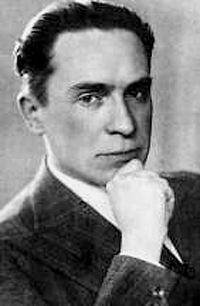
Chizhevsky may have been influenced by a French physicist named Jean-Jacques Dortous de Mairan [1678-1771], who’d discovered that one of his plants folded up its leaves and “went to sleep” at the same time every night, even when placed in total darkness. The mechanism for this strange activity was right under de Mairan’s nose, but at the time he didn’t see it. Although he’d written a book about the aurora borealis, he dismissed the idea that solar activity and magnetism could be responsible for the regular timetable of his plant. Two centuries later Chizhevsky immediately understood the connection.
Although the Soviet government eventually provided Chizhevsky with his own laboratory, largely because of his contribution to the understanding of air ionization, one person who remained singularly unimpressed with Chizhevsky’s theories was Josef Stalin, who in 1942 demanded that the scientist retract his ideas about the sun’s influence on human beings. Any proof that revolution was brought about by anything other than the natural progression of the working class’s struggle might prove ruinous to the Communist Party.
When Chizhevsky refused, he was shipped off to a gulag in the Ural Mountains. He spent eight years imprisoned there and, after his release in Kazakhstan, another eight years being rehabilitated, after which, his already fragile health largely broken, he lived only long enough to restore his reputation. A year after his death in the mid-1960s, when the Soviet Academy of Sciences opened his archives, the sheer breadth and foresight of Chizhevsky’s work stood fully revealed. He became a posthumous hero, with a science center created in his name, which houses, in pride of place, the Chizhevsky “chandelier,” an early air ionizer.
Nevertheless it required years and the work of many other scientists around the world to determine what exactly Chizhevsky had been up to. In America the economist Edward Dewey was one of several to take up Chizhevsky’s mantle, largely as an explanation for economic boom-and-bust cycles, in a doomed attempt to help President Herbert Hoover avoid being blamed for the Great Depression. It was not until the 1970s, with the work of the biologist and physician Franz Halberg and his lifelong colleague, the Belgian physicist Germaine Cornélissen, that mainstream science finally began to understand the extent of our reliance upon the volatile activity of the sun.
Halberg and Cornélissen are cycle hunters, both expert in what they call “chronomes,” repeating patterns in biology. Today a grand old man in his nineties, Halberg has devoted his working life to studying the effect of external environmental influences on living things. In 1972 he enlisted Cornélissen as a young postgraduate precisely because her doctoral dissertation had been on time-series analysis, which looks for the patterns in events that are repeated over regular intervals. Halberg had already discovered that virtually every one of our biological processes operates according to a predictable timetable. It was Halberg who first coined the term “circadian” (circa = about; dia = day) for daily biological rhythms, such as our own sleep-wake cycle, and eventually the term “chronobiology,” the recurrent cycles of biological function. He also set up the most respected institution to study this phenomenon, the Chronobiology Laboratories at the University of Minnesota, now world-renowned.
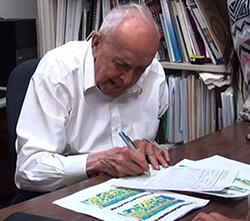
Everywhere Halberg and Cornélissen look they see new cycles and periodicities. During years of meticulous research the pair have discovered that the biological processes of every living thing not only have daily rhythms, but also biweekly, weekly, and even yearly cycles; human pulse and blood pressure, body temperature and blood clotting, circulation of lymphocytes and hormonal cycles, variability of heart rate, and most other functions of the human body all ebb and flow according to a relatively predictable timetable…
After puzzling for years over the mechanism for these cycles within organisms and whether “time genes” turned on by external influences could exist, Halberg finally concurred with Chizhevsky’s conclusion all those years before: the synchronizer of many of these processes is not built in, but is, as certain of his colleagues referred to it, a zeitgeber—his native German for “timekeeper”—some sort of external environmental signal that set off and entrained, or synchronized, the biological rhythms of all living systems. Although Halberg himself detested the term as imprecise—many of the rhythms seemed slightly irregular—it wasn’t until he was in his eighties that he uncovered evidence that the zeitgeber resided in outer space, and that the master switch was not light but, just as Chizhevsky had predicted, solar magnetic fields.
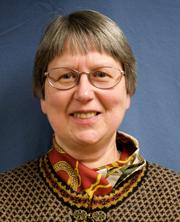
Halberg realized that Chizhevsky’s discovery went beyond periodicities and cycles, for he had uncovered a sobering truth about the human condition: we are not completely in charge of our own destiny, particularly our biological destiny. The sphere of influence on our biology does not end with our immediate environment or even the Earth itself, but extends to the outer reaches of the cosmos. As many other colleagues of his around the world now confirm, the metronome of every living thing, setting the tempo for our basic regulatory systems and maintaining us in a state of healthy equilibrium, is the sun. So powerful is this cosmic zeitgeber that it may even influence our physical size, our longevity, our mental stability, our propensity to violence, and possibly even what we consider our uniquely individual motivation. Our ultimate environmental Bond, which shapes us and our lives, is with a star 93 million miles away.
The Earth is essentially a giant magnet, its North and South Poles, the two poles of the magnet, surrounded by a donut-shaped magnetic field. This ambient geomagnetic field, or magnetosphere, is in constant flux, affected by the weather, any geological changes on Earth, even the wobble of the Earth in its daily rotation, but most particularly by the extreme changes of weather in space, largely caused by the ferocious activity of the sun.
The benign star responsible for all life on Earth is essentially a cluster of unimaginably hot hydrogen and helium the size of approximately one million Earths, crossed with a layer of unstable magnetic fields. Not surprisingly this mercurial combination results in periodic volcano-style eruptions, propelling gas into space as vortices of concentrated fields, the dark blobs on the sun’s surface that we call sunspots, pull apart and reconnect in new arrangements. Despite this potentially anarchic combination, the sun carries out this activity according to a fairly predictable timetable; solar cycles consist of approximately eleven years, during which time sunspots build up, discharge, and begin to wane.
During the waxing stage, as sunspots accumulate, so the sun begins to hurl its gaseous explosions our way: solar flares, electrified, bullet-like high-energy protons, corona mass ejections—a billion tons’ worth of gas and magnetic fields with the force of billions of atomic bombs—all made airborne and some aimed toward Earth through the electrified gas of the solar wind, traveling some five million miles per hour. This activity causes extreme geomagnetic storms in space, which, during moments of intense solar activity, create a powerful effect on the Earth’s magnetic field. During any given eleven-year solar cycle, we can expect to experience two years’ worth of geomagnetic storms severe enough to disrupt portions of the Earth’s electrical power, interrupt high-tech communications systems, and disorient spacecraft and satellite navigation systems.
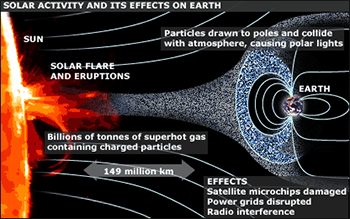 Until recently scientists had discounted the idea that the Earth’s faint magnetic field (a thousand times weaker than a standard high school horseshoe magnet) had any effect on basic biological processes, particularly as all living things on Earth are now exposed to much stronger electromagnetic and geomagnetic fields every moment of our modern technologically dependent lives. But the latest discoveries have unveiled that living things have a small window through which subtle geomagnetic and electromagnetic fields, such as those generated by the Earth, rather than the artificial kind generated by technology, have the most profound effect upon all cellular processes in living things. Changes in this faint charge, particularly those of extremely low frequencies (less than 100 Hz), profoundly influence virtually all biological processes in living things—particularly the two major engines of the body, the heart and the brain.
Until recently scientists had discounted the idea that the Earth’s faint magnetic field (a thousand times weaker than a standard high school horseshoe magnet) had any effect on basic biological processes, particularly as all living things on Earth are now exposed to much stronger electromagnetic and geomagnetic fields every moment of our modern technologically dependent lives. But the latest discoveries have unveiled that living things have a small window through which subtle geomagnetic and electromagnetic fields, such as those generated by the Earth, rather than the artificial kind generated by technology, have the most profound effect upon all cellular processes in living things. Changes in this faint charge, particularly those of extremely low frequencies (less than 100 Hz), profoundly influence virtually all biological processes in living things—particularly the two major engines of the body, the heart and the brain.
This shouldn’t be surprising, remarks Cornélissen. “We know when a geomagnetic storm is coming—through our electrical grids,” she says. “Electric circuits react to it, as do the heart, brain, and neurosystem. In fact, the heart is the biggest electrical system of the body.” As she views it, a human being is simply one more satellite system prone to being destabilized or even blown off course by an electrical storm in space.
Magnetic fields arise from the flow of ions, the electrons and atoms with charge. When magnetic forces change direction, as they often do on the surface of the sun, they shift the direction of the flow of atoms and particles. All living things, including humans, are made of the same basic material, and as Chizhevsky intuited, any change of magnetic force will alter our own internal atomic and subatomic flow…
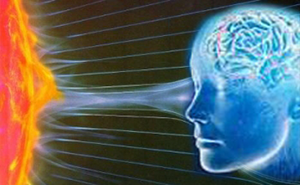 When the sun explodes, so, in a sense, do we. Geomagnetic activity in space upsets our energetic equilibrium, profoundly affecting our mental stability. During a magnetic storm the mentally disturbed get even more so. The higher the geomagnetic activity, the greater the increases in general psychiatric disorders, the greater the number of patients hospitalized for nervous conditions, and the greater the number of attempted suicides…
When the sun explodes, so, in a sense, do we. Geomagnetic activity in space upsets our energetic equilibrium, profoundly affecting our mental stability. During a magnetic storm the mentally disturbed get even more so. The higher the geomagnetic activity, the greater the increases in general psychiatric disorders, the greater the number of patients hospitalized for nervous conditions, and the greater the number of attempted suicides…
We have to develop greater appreciation of the fact that we live within a cosmic Bond of complex interrelationships and constant flux. Rather than discrete entities, living things and the Earth itself are part of an energetic system dependent upon other outer forces, gravitational and geomagnetic. Halberg regards this effect poetically. The living organism, he says, must be viewed as “a dynamo and a magnet, living on the Earth, a larger magnet, in the atmosphere of the sun … with magnetic storms causing blackouts in cities and … in human hearts.”
The importance of Chizhevsky’s discovery and Halberg’s evidence cannot be overestimated. If we are essentially at the mercy of the slightest move of the sun and its activity, their work stands as a giant refutation of our misplaced belief in ourselves as masters of the universe—or even of ourselves. The Earth, its inhabitants, and all the other planets around us exist within a sphere of collective influence, resonating in unison. Our true zeitgeber is the collective effect of all the solar system.
Ultimately it is difficult to consider our universe as anything other than a unified whole. We can begin to take charge of our own destiny only when we consider the Bond in its entirety, as a superorganism, completely interrelated.
In a manner of speaking, we already do. It is actually through our interdependence that we learn to comprehend our world.
